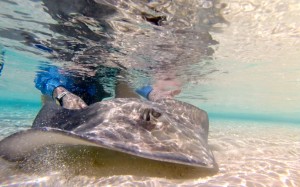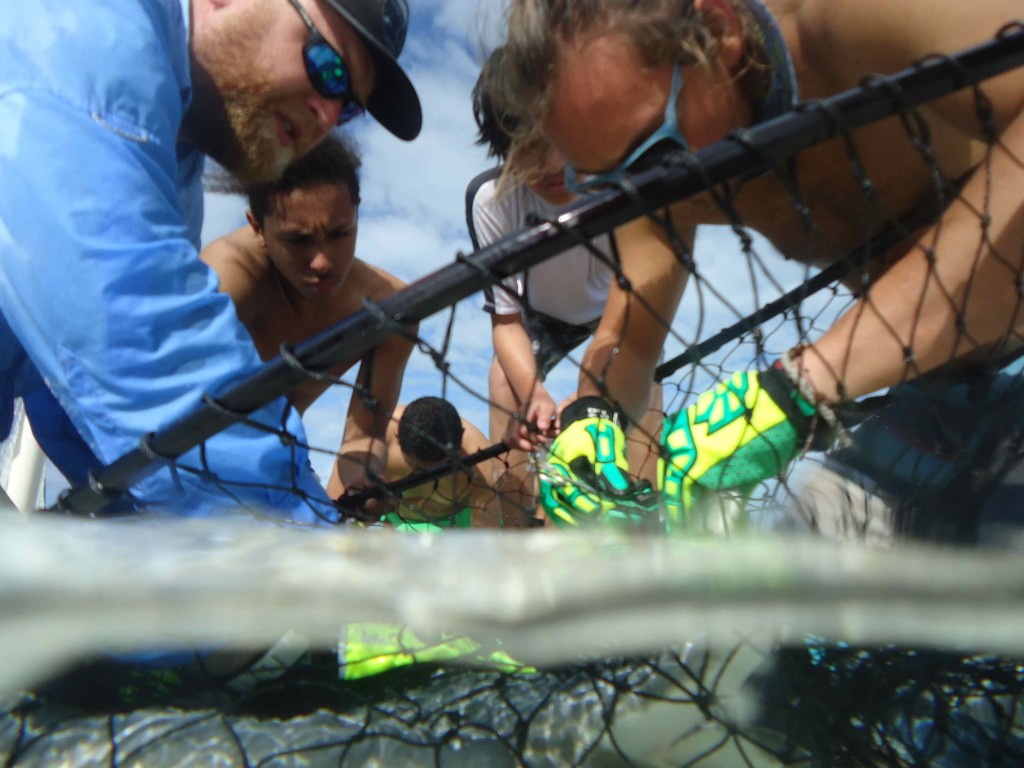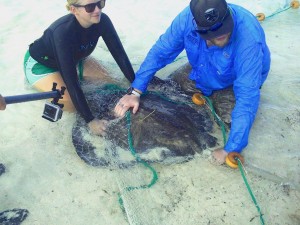
With a successful start to field sampling for its newest project, the CEI Shark Research and Conservation Program broadened its portfolio to include studies of Southern stingrays (Dasyatis americana). These rays are elasmobranch relatives to the program’s more traditional subjects. Principal investigator Dr. Owen O’Shea explains, “the research will determine long-term site fidelity, seasonality, and spatial partitioning within this species so as to allow a multi-faceted approach to understanding ontogenetic habitat transitioning in this species.”
Southern stingrays rely on coastal and nearshore habitats for critical life history stages, as they transition from juvenile nursery grounds to offshore habitats as adults. An increase in coastal development and degradation within The Bahamas may affect the quality and continuity of the available habitat this species requires for various functions, impacting them at a tertiary, or population level.

Southern stingrays are frequent visitors to the warm, shallow waters surrounding Cape Eleuthera and are generally more abundant during the cooler months. Like their shark relatives, these rays undertake annual migrations for purposes unknown to us, where they relocate to an as yet unknown destination. This research will employ simple mark-recapture methods to determine site fidelity in returning individuals, population estimates and demography, as well as collecting a range of other important data, such as genetic and stable isotope samples, detailed morphometric data, and blood samples.

This project will be run as an Island School Research Class during Spring 2015 with sampling to occur throughout the year. Stay tuned for updates from this and other projects of the Shark Research and Conservation Program.